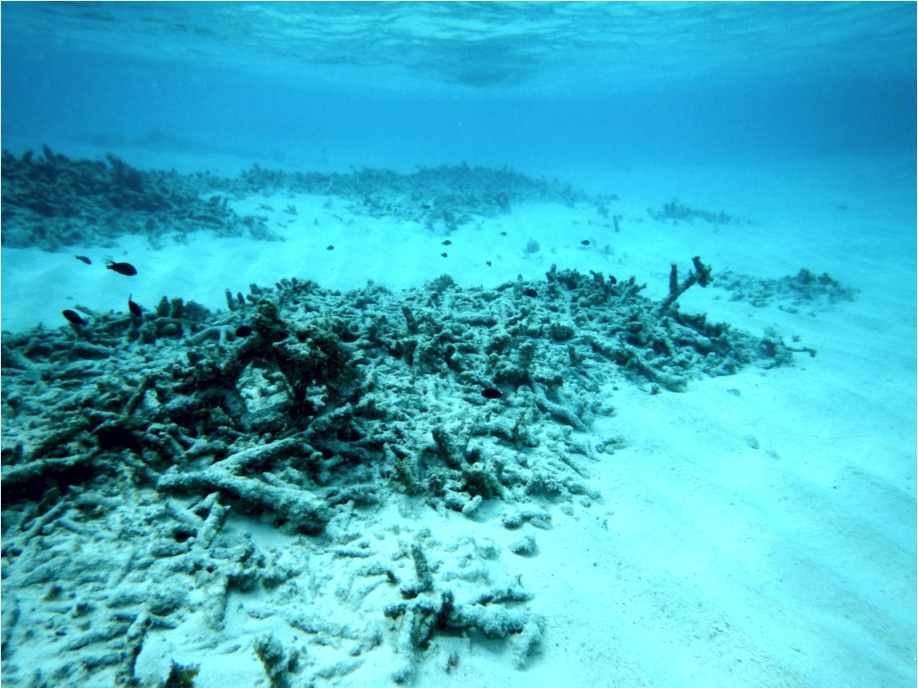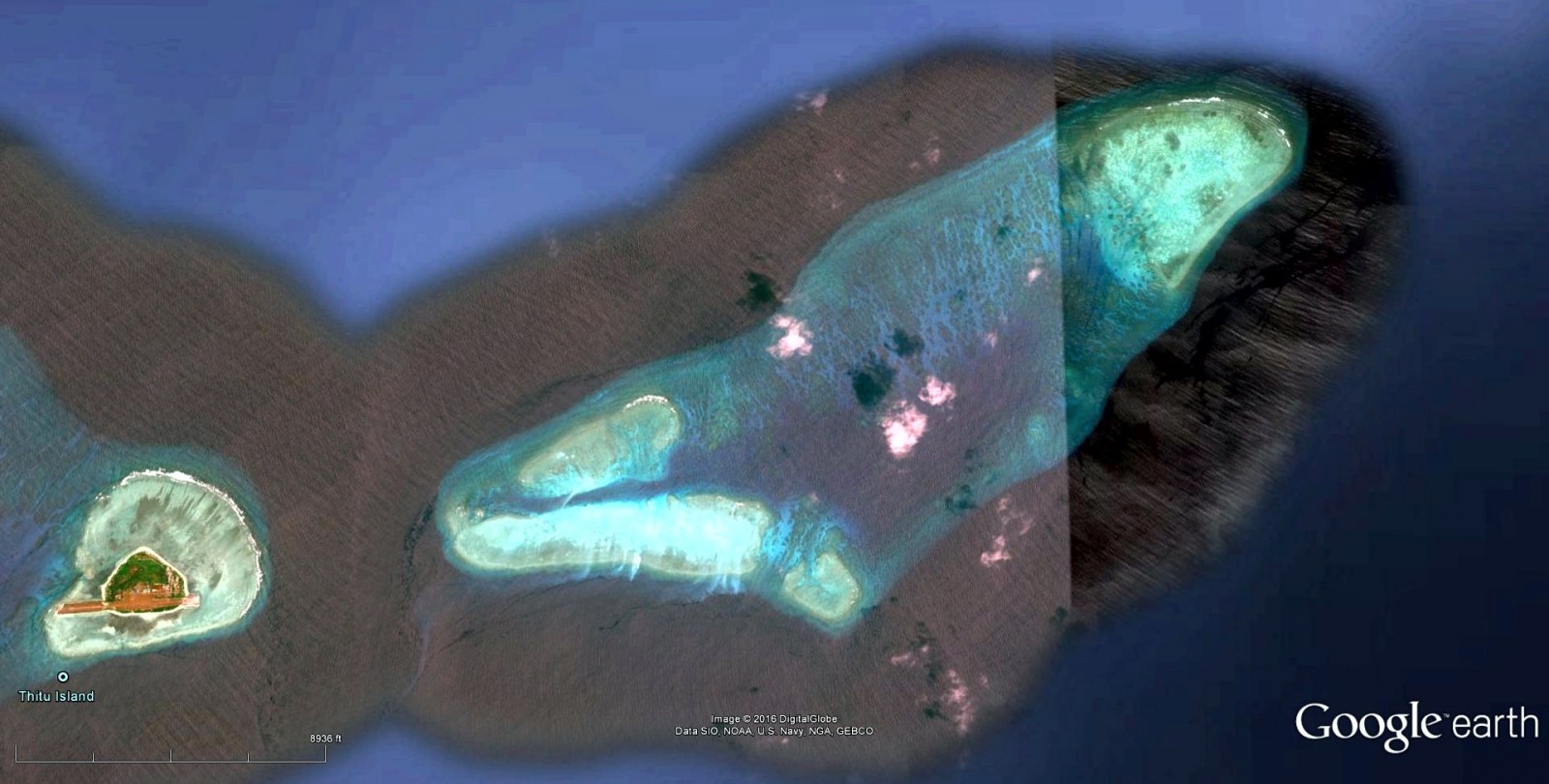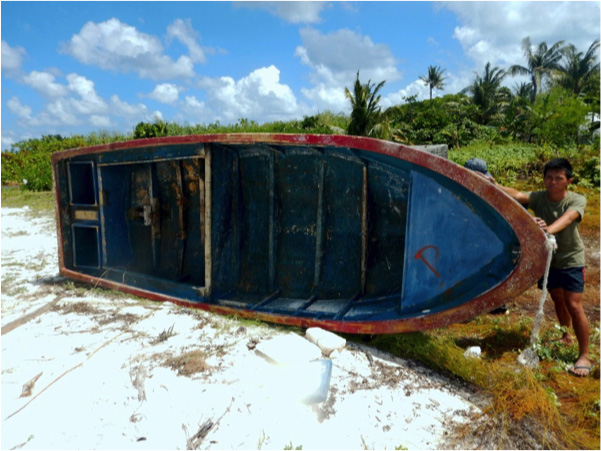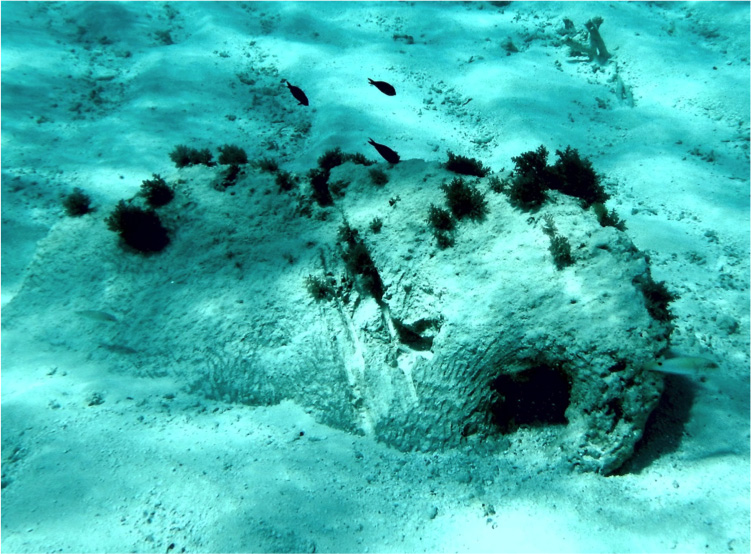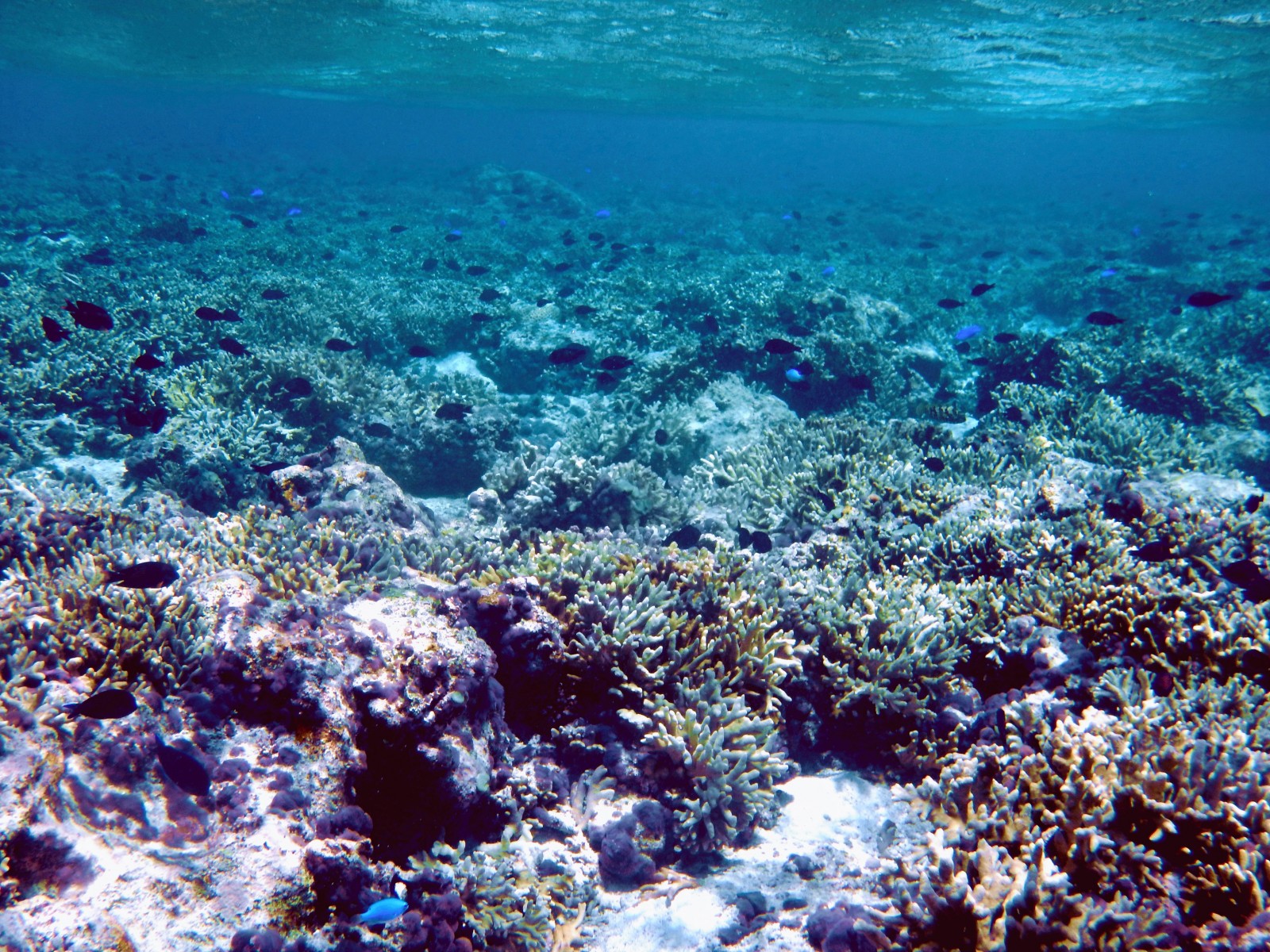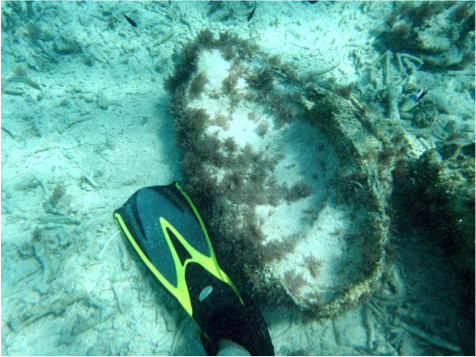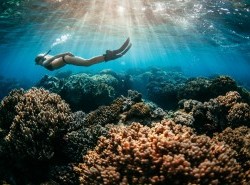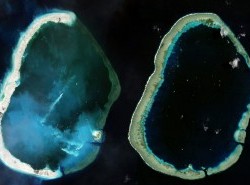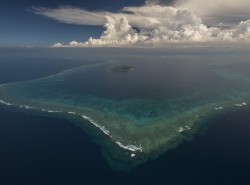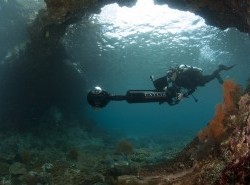Chinese fishing boats are wantonly destroying reefs using anchors and boat propellors to extract valuable Giant Clams as global anti-poaching efforts impact the ivory trade, leaving a gap in the market. Following reports by the BBC and Diplomat Magazine, marine ecologist & biologist John McManus headed to the disputed territory in the South China Sea to assess the damage himself. Here's what he found...
A January article by Victor Robert Lee in the Diplomat on cutter boats causing widespread damage to coral reefs in the Spratly Islands area of the South China Sea caused me grave concerns about the situation there. Lee contended that fishers, particularly from Tanmen China, were anchoring small boats, and pulling them laterally with the propellers turning so as to dig up the bottom in order to expose giant clams.
The shells (especially the endangered Tridacna gigas) sell for around US$1000, and are used to in many products such as carvings, that are worth far more. Lee identified hundreds of such boats in operation across the area, working in tandem with larger vessels that carry the boats and their valuable cargo.
In late February, I volunteered to accompany a media group into the area so I could see for myself what was going on. I was able to conduct swimming swath surveys of more than 1 km each along lines NNE-SSW on the reef flats and lagoons at Thitu (Pag-asa), an unnamed reef to the east shaped like a checkmark, and Tieshi Reef further to the east.
The reef flat and shallow lagoon at Thitu was clearly overfished - piscivorous fish (fish that eat other fish) were virtually absent. But there was still very good coral cover behind the breakers and on the outer reef flat -- mostly small, dense, relatively fast growing Acropora and Montipora colonies interspersed with some low microatolls of various more storm resistant and slow growing species. The coral community was clearly adapted to rapid recovery due to the frequent typhoons that affect the area, and was well-flushed with very clear oceanic water.
On the other hand, the 'checkmark' reef had some of the most complete mortality I have ever seen on a coral reef. It was this reef that was visited in December 2015 by BBC reporter Rupert Wingfield-Hayes, who filmed the giant clam harvesting activities . The fishers had departed weeks prior to my visit. For most of the informal swath transect I inspected, there were no visible living macroinvertebrates -- only arching hills of sand covered with dead coral (again mostly Acropora and Montipora). Along the SSW end of the swath on the reef crest, there was patchy coral recovery but low overall coral cover.
Tieshi Reef had apparently been severely damaged two-four years before, based on sizes of recovering corals. There, apparently strong currents had washed out most of the sand and gravel-sized coral after it was piled up unnaturally, leaving very old rough plates of dead coral on which new colonies were beginning to grow. In many cases, the new colonies had tipped over due to the unstable substrates. Damage from the released silt and sand was evident at least another half kilometer downstream of the reef flat on a long slope to at least 5 m depth. Heavy winds and waves prevented further investigation...
Given the water clarity and species of corals involved, I would expect reasonable recovery within a decade. However, in both cases the unstable substrate will undoubtedly delay full recovery, perhaps up to a second decade. Still, recovery has started and corals will become abundant in various patches within a few years.
All three reefs are visible on Google Earth, and the arcs of sand are very visible on the 'checkmark' reef just east of Thitu. I found a total of 35 reefs within the 'Greater Spratly Islands' (including Scarborough Reef), which have clearly been damaged similarly, including all seven of the reefs on which new islands have been built since 2014. Fishers on a boat I used for transport complained that all the shallow reefs they would normally fish at the Palawan end of the Spratly Islands have been similarly severely damaged, although the out-of-date imagery available on Google Earth for those reefs does not yet show the damage.
These reefs include Half Moon Shoal and several others I had visited in the early 90's, and until now considered to be the most beautiful reefs I had ever seen. From available imagery, there appears to be no sign of this cutter boat damage on any of the 21 reefs with military outposts occupied by Vietnam, nor on the five reefs guarded by Malaysia, nor the two guarded (one occupied) by Taiwan.
Philippine military personnel informed me that they are not generally allowed to make arrests of these fishers from Mainland China, and there are signs of damage on two reefs next to small Philippine outposts out of the nine reefs they occupy. Discounting the reefs that seem to be protected and those on which I already found cutter-boat damage, it seems likely that another 10 reefs in this area (including the ones discussed by the fishers) are likely to be damaged or will be damaged soon by this destructive method of clam fishing.
That means a total at least 45 reefs, all atolls or similarly large reefs, in this area will probably soon be severely damaged, if they aren't already. Note that the cutter boat marks are visible on at least another six reefs in the Paracel Islands. Some of the shells labelled on various sales websites as of the highest quality are blatantly advertised as coming from Scarborough Reef, which has been closed off to outsiders by Mainland China since 2012.
Fishers from many countries have been known to harvest endangered giant clams illegally -- often from reefs outside their own national waters. That is a serious problem which must be addressed. However, the severe ecological damage associated with these cutter boats raises concern to a much higher level.
The driving force behind all this is the relative success of the very righteous global effort to slow down the ivory trade. Giant clams are filling the resulting gap in supply and demand. It is now incumbent upon those same global NGOs to work to shut down the giant clam trade.
John McManus is Professor of Marine Biology and Ecology at the Rosenstiel School, University of Miami
